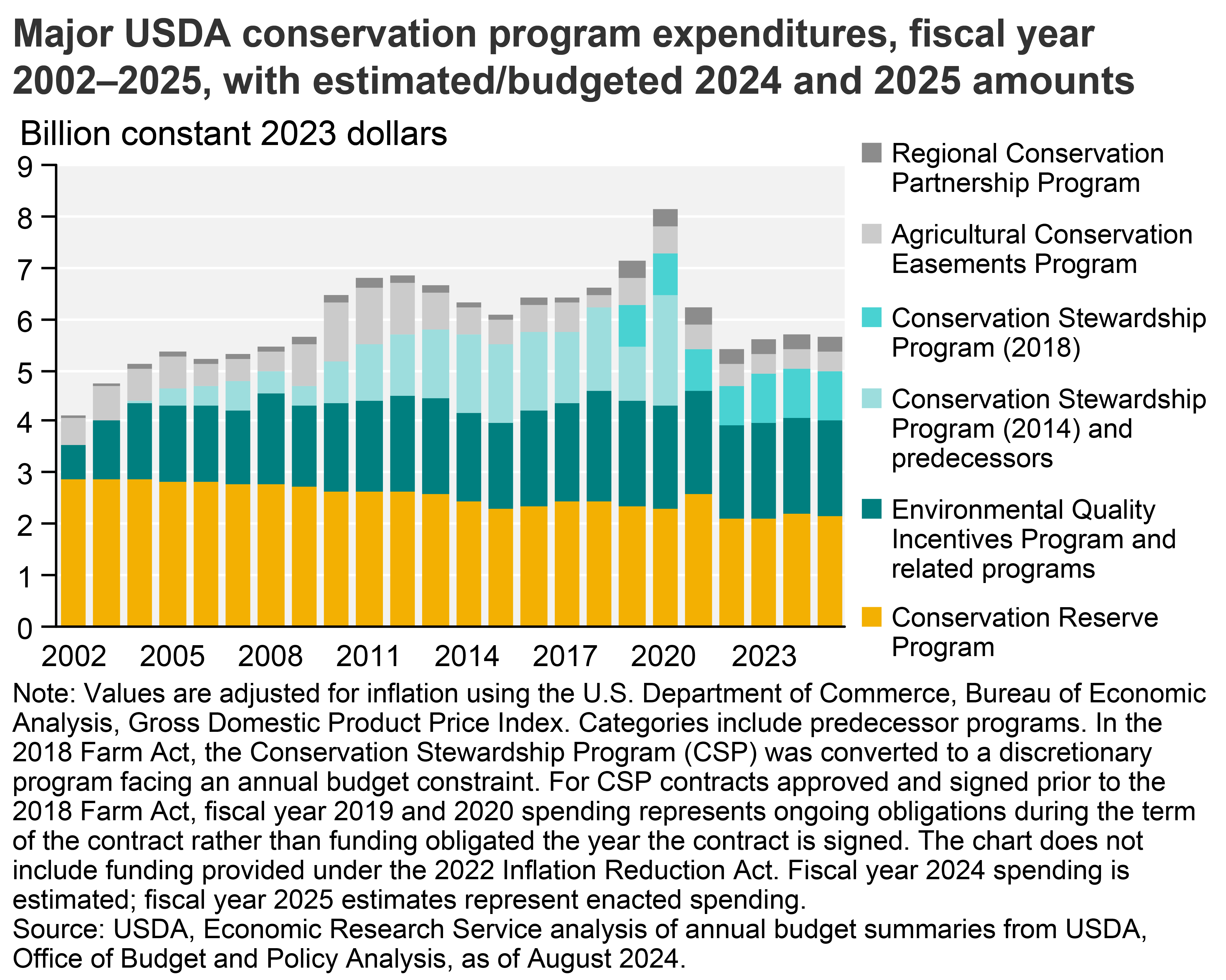USDA conservation funding encompasses a variety of programs
- by Kate Binzen Fuller
- 10/24/2024

USDA provides financial and technical assistance to agricultural producers through voluntary conservation programs to address natural resource concerns. While the 2002 and 2008 Farm Acts each increased conservation spending, the 2014 and 2018 Farm Acts held total budgeted spending largely level, at an average of between $6.0 and $6.5 billion per year in 2023 dollars. Actual spending (shown in the chart) has varied more year to year. Current major funded USDA programs include the Regional Conservation Partnership Program, which assists partners addressing problems on a regional or watershed scale through methods including land retirement, easements, and conservation practices. The Agricultural Conservation Easement Program provides long-term or permanent easements for preservation of wetlands and the protection of agricultural land from commercial or residential development. The Conservation Stewardship Program provides 5-year contracts that pay producers to maintain or expand existing conservation activities. The Environmental Quality Incentives Program provides financial assistance to farmers to employ conservation practices, such as conservation tillage, and planting cover crops. The Conservation Reserve Program provides 10‒15-year contracts that pay producers to restrict agricultural land use in ways that promote ecosystem services. This chart does not include funding provided under the 2022 Inflation Reduction Act (IRA), which provided additional funding for several major conservation programs. Estimated IRA spending totaled approximately $3.1 billion in fiscal year 2024 and enacted IRA funding totaled approximately $5.7 billion in fiscal year 2025.
